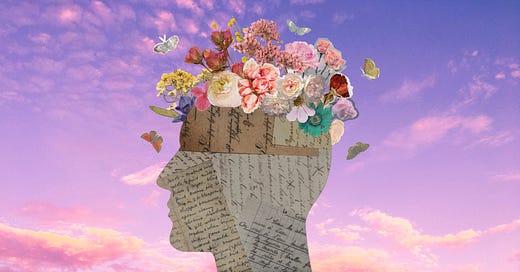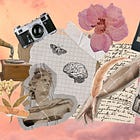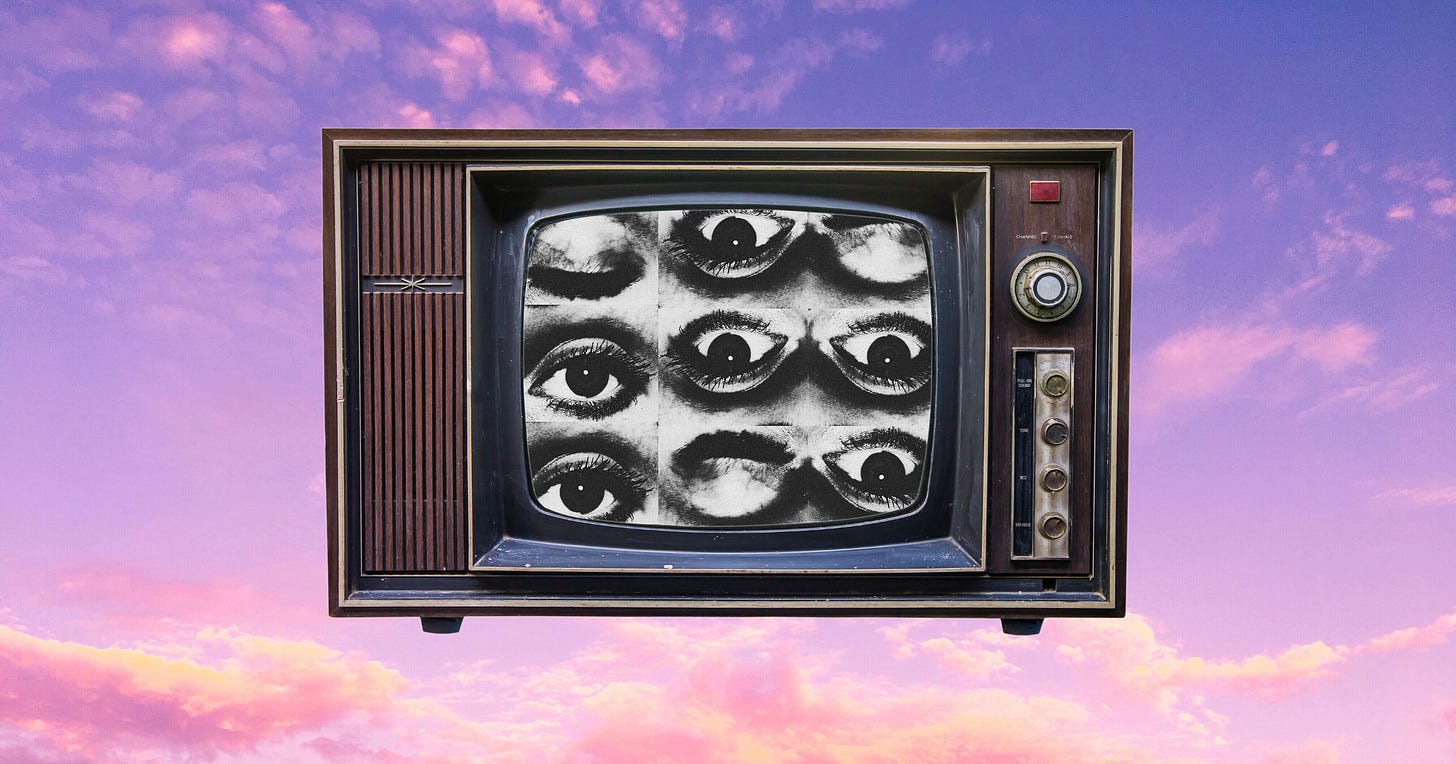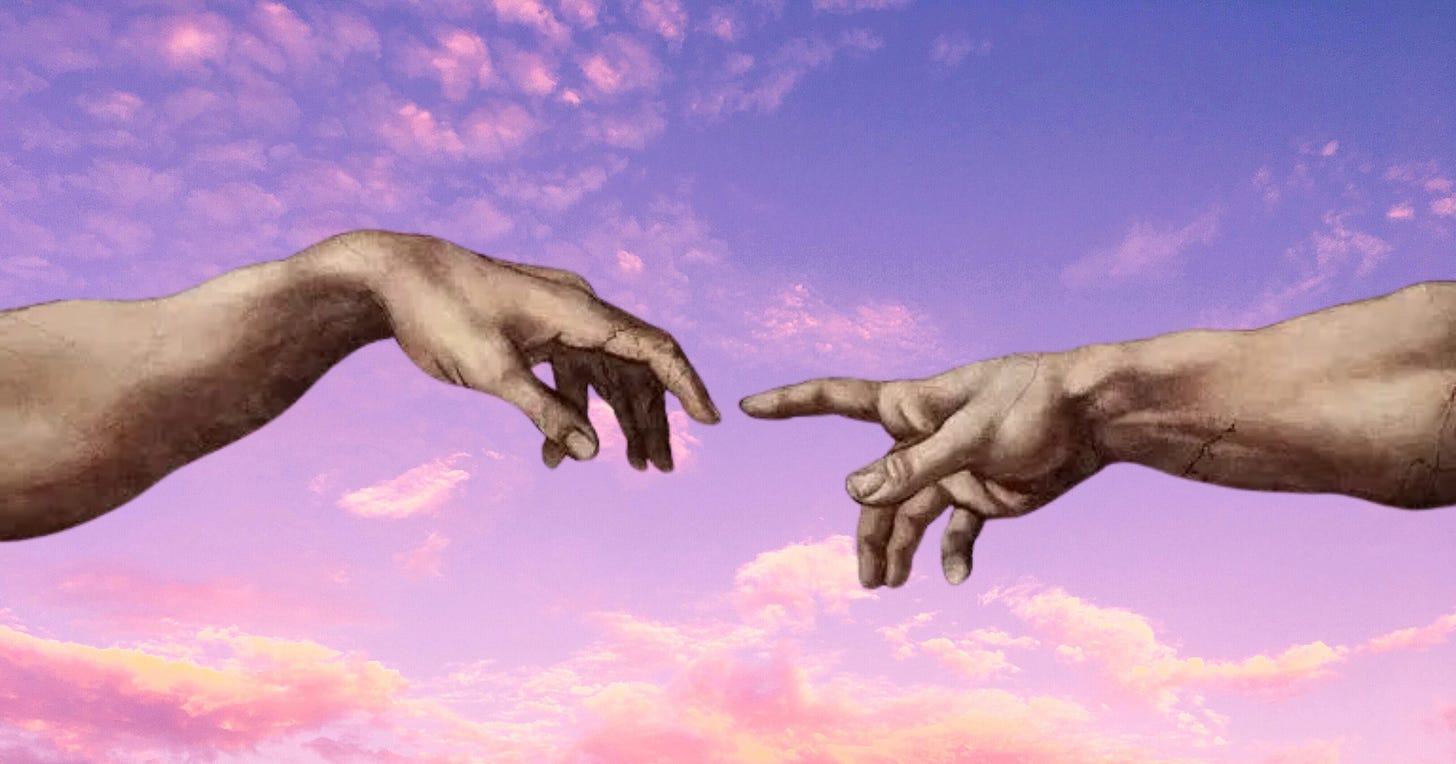To create is to live twice. –Albert Camus
Creativity isn't just my passion—it's one of the most radical acts of human resistance in an age of algorithmic uniformity.
It's not a rare gift reserved for artists or geniuses, but a core part of who we are as human beings—an instinct that has helped us survive and adapt through millennia of change.
From the first stone tools to groundbreaking technologies and timeless works of art, our ability to imagine, create, and transform has shaped every chapter of human history.
So, what happens when machines begin to encroach on the very process that has distinguished us as a species?
In Part 1 of this series, I shared my personal awakening to how AI is challenging creativity, especially for people with specialized career paths or artistic identities. I turned to the original Renaissance—an extraordinary convergence of art, science, and cross-disciplinary curiosity—as a blueprint for reimagining what’s possible in this new era of algorithmic creation.
Check out Part 1 if you haven’t already:
Now, in Part 2, I want to explore why renaissance thinking isn’t just a personal philosophy; it’s a practical advantage in the age of AI.
What I've Learned About AI's Advantages (And Its Limits)
Before I could take refuge in the renaissance mindset, I had to confront reality without wishful thinking or denial. I needed to get brutally honest about where the algorithms truly excel.
Through my experience working across various creative fields like video production, graphic design, and content writing, I've witnessed firsthand how AI has mastered:
Pattern recognition within defined parameters. AI spots patterns in data far quicker than I ever could.
Consistency. Unlike me, algorithms don't have good days and bad days.
Speed. What takes me hours to write, AI can generate in seconds.
Memory. AI never forgets a reference or misplaces information.
That’s what makes AI so good at well-defined, specialized tasks—the kind that started making my work in content and marketing a little less relevant. I couldn't just hope this technological wave would pass me by.
I had to acknowledge the uncomfortable truth.
But as I continued to experiment with these tools, I also discovered some significant limitations:
Contextual understanding. AI struggles to grasp the subtle context that I intuitively understand.
Novel synthesis. While AI combines existing ideas in predictable ways, it rarely makes the surprising connections that spark my most creative work.
Emotional intelligence. Algorithms simulate emotional responses but lack the authentic empathy I bring to my creative projects.
Purpose and meaning. AI cannot reliably determine what matters or why—something I've spent years contemplating.
These limitations created what I now think of as the renaissance advantage. And it’s more than just technical limitations; it’s the fundamental difference between processing information and creating meaning.
The renaissance advantage is our distinctly human ability to synthesize knowledge across domains in ways that are contextually relevant, emotionally resonant, and deeply meaningful.
This isn't theoretical. It's a practical edge that emerges when we stop trying to out-algorithm the algorithms and embrace the integrated thinking that machines simply cannot replicate.
Uniquely Human Creativity
While AI excels at specialized tasks, true creativity isn't just generative—it’s transformative.
Generative AI can write a poem, but it won’t grasp the heartbreak behind the words. It can design a logo, but it misses the soul of a brand’s story. It can produce a marketing script, but it can't feel the nuanced emotional journey of the audience.
True creativity is not just about the output, but about the profound shift in perspective that occurs in the process of creation. Where AI sees data points and patterns, human creativity sees narrative, emotion, and possibility.
This is the unique human capacity that AI can't replicate (yet).
What This Looks Like in Practice
Creativity is the power to connect the seemingly unconnected. –William Plomer
I've started to notice something interesting in my work life: the moments where I've created the most value (for myself and others) weren't when I was being a specialist, but when different parts of my background unexpectedly came together.
These crossroads of knowledge seem to be where human perspective offers something that AI still can't quite capture. Let me share a few examples of what this looks like in practice.
Merging Multimedia and eCommerce: A Creative Ecosystem
As a musician working closely with a well-known artist, I understood the nuances of his creative world. So when he shared how frustrating his merch operation had become—zero sales transparency, sky-high order minimums, poor communication—I saw an opportunity to put my cross-disciplinary skills to work.
I’d previously built a print-on-demand store as a side project, so I proposed a new approach: an automated online shop that gave him full visibility, more flexibility, and total creative control.
I also designed new merchandise that I knew would resonate with his specific audience, carefully crafting the entire operation to reflect his unique artistic personality and values.
Since I was already producing music videos, reels, and graphics for him, I had an understanding of his visual aesthetic and brand identity, which allowed me to create a cohesive experience across all platforms—from video content to merchandise design.
Now, he’s able to see orders in real-time, experiment with new designs, and connect with fans without the usual bottlenecks.
This wasn’t just about selling merch—it was about protecting his creative connection with his audience and removing friction from the process. What made it work wasn't hyper-specialized expertise, but the ability to bridge media, including music, video, and graphics, into a cohesive creative business strategy.
AI can certainly assist with isolated tasks like copy or design, but it doesn’t understand the bigger picture. That’s where renaissance thinking makes all the difference.
From Words to Video: A Cross-Skill Pivot
Another example emerged when a client I was writing product review articles for learned about my video experience and wanted to expand their services. Since I was adept with video production, scriptwriting, and related skills, I helped transform their static content model into a fully integrated video review service.
What made this work wasn’t any one skill; it was the fusion of technical know-how, audience insight, and visual storytelling. Beyond improving content quality, that combination helped launch entirely new line of business—for the client, and for me.
Sure, AI can crank out a script or stitch together footage, but it can’t intuitively shape a story arc that feels engaging. It also can’t show up on-screen without being…well, a little creepy.
Turning Niche Knowledge into Leadership Training
When a tech CEO friend of mine asked me to develop a custom executive training program for his company, I felt like an impostor at first—I’d never created anything like it before. But I drew from an unexpected mix of skills: remote work experience, a long-standing interest in personality typing, a natural coaching instinct, and a knack for communications and design.
Despite my initial doubts, that unique combination made it work. The CEO loved the final product, and participants gave enthusiastic feedback. The project turned into a full package: a tailored online course for the executive team, a company-wide retreat workshop, a visual presentation, and a companion workbook.
AI could certainly generate pieces of that—slides, scripts, maybe even content outlines—but it couldn’t weave them into something that felt cohesive and personal. What made it work was connecting personality insight, team-building strategy, and course design.
These kinds of connections require lived experience and depth, not just data.
The Power of Unexpected Connections
These examples might seem like dabbling across disciplines, but in actuality, they reflect the kind of depth that comes from exploring multiple domains with curiosity and intention over time.
By contrast, AI tends to treat tasks in isolation. But if you’re someone who has cultivated a diverse skill set, you tend to notice the patterns, relationships, and opportunities that live in the spaces between.
And while the examples above focus on professional work, this kind of thinking applies everywhere—creativity, relationships, learning, and even making everyday choices.
My Collaborative Relationship with AI
As someone who’s both multi-passionate and a fan of technology, I haven’t positioned myself against AI. Instead, I’ve developed a collaborative relationship with it.
I understand its strengths, as well as its limitations—and I’ve decided to use it as one instrument in a broader creative orchestra.
Some people use AI to fill in the gaps, or even replace expertise altogether. While that’s certainly tempting at times, I try to build on what I already know and guide it with intention, rather than just taking what it gives me at face value.
Here’s how I approach collaboration with AI:
Delegating specialized tasks. I use AI for well-defined, repetitive parts of my workflow (like research and content formatting), so I can focus on the parts of creating that I love the most.
Augmenting creativity. I treat AI as a brainstorming partner, helping me generate ideas that I can evaluate, refine, and shape through my own cross-disciplinary lens.
Expanding range. I use it to explore adjacent domains more quickly, creating building blocks I can connect to existing knowledge in new, creative ways.
This approach has shifted my mindset from fearing replacement to feeling excited about what’s possible. The key seems to be knowing how to guide AI with integrated thinking and real-world context.
And this kind of thinking goes beyond being a generalist: It’s not about having surface-level skills in many areas, but about developing depth in multiple domains and learning to connect them in meaningful, context-aware ways.
That’s the renaissance advantage—and it’s something anyone can develop.
How to Start Thinking Like a Renaissance Person
If this renaissance approach resonates with you, here are a few ways to start tapping into it, without needing to be an expert in everything.
Sketch your skill map. What are the main domains you know well, professionally or personally? Which jobs, hobbies, or life experiences have shaped how you think? Look for bridges between them. Where do they intersect in ways you haven’t fully explored?
Get curious at the edges. Innovation often happens where fields overlap. What happens when you blend design and psychology? Tech and education? Writing and strategy? Follow your curiosity where it feels a little weird—that’s often where your unique value lives.
Cross-pollinate on purpose. Next time you're stuck, try solving the problem through a completely different lens. How might an artist approach this? An engineer? A teacher?
Practice translation. If you’ve got a foot in multiple worlds, use it. Can you explain a marketing idea to a visual thinker? Translate dev jargon into something a CEO cares about? Translation builds bridges, and bridges are where cross-domain thinkers thrive.
Let art and logic coexist. You don’t have to choose. Write code and paint. Run a business and write poetry. Some of your best insights will come when both sides are in conversation.
In Part 3, I’ll explore some ideas for building and sustaining a multi-passionate life using these principles—how to make space for diverse skills, stay focused without narrowing yourself into a box, and communicate your value clearly in an increasingly AI-saturated world.
In the meantime, I’d love to hear from you:
What unusual combination of skills or passions do you bring to the table?
Where do your interests overlap in ways others might not expect?
What have you learned or lived that AI just can’t replicate?
This is Part 2 of my three-part series on renaissance thinking in the age of AI. Read Part 1 here and subscribe if you want Part 3 delivered straight to your inbox.








I’ve heard a lot of creatives out there bemoan the rise of AI and how it has hurt their craft and I feel for them, but all you can do is move along with the times and make it work for you as much as possible. Seeing technology as the enemy rather than a neutral state of cultural progression isn’t helpful.